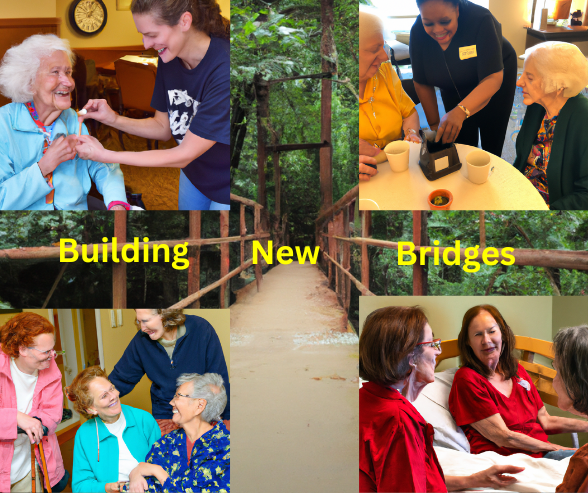Introduction
Implementing a successful volunteer program in long-term care communities can significantly enhance the quality of life for residents, bringing fresh energy, companionship, and a sense of connection to the outside world. However, the success of such programs often hinges on the support and engagement of the community staff. They play a crucial role in facilitating and nurturing the relationship between volunteers and residents. Here’s a comprehensive guide on building support for a volunteer program among community staff, ensuring a sustainable and positive impact on your community.
Understanding the Importance of Staff Engagement
Before initiating a volunteer program, it’s essential to recognize the pivotal role that community staff play in its success. Staff members are the primary caregivers and the bridge between residents and volunteers. Their buy-in is crucial because they understand the residents’ needs, schedules, and preferences. Gaining their support can lead to a more tailored and effective volunteer program that aligns with the daily operations of the community.
Step 1: Communicate Clear Objectives and Benefits
Begin by clearly articulating the goals and benefits of the volunteer program to the staff. Explain how volunteers can provide additional social interaction, assist with activities, and offer emotional support to residents. Highlight stories or studies demonstrating the positive effects of volunteer interactions, such as reduced feelings of loneliness and improved overall well-being. Ensuring that staff understand how the program can make their jobs easier and enrich the care environment is crucial.
Step 2: Involve Staff in Planning and Implementation
To foster ownership and enthusiasm among staff, involve them in the planning stages of the volunteer program. Seek their input on the types of activities that volunteers could help with and the times of day when extra hands are most needed. By involving staff in these decisions, you acknowledge their expertise and create a program that complements their work rather than disrupts it.
Step 3: Provide Training for Staff
Equip your staff with the knowledge and skills to work effectively with volunteers. Offer training sessions that cover the objectives of the volunteer program, the roles and responsibilities of volunteers, and the best practices for integrating volunteers into the care setting. Training should also include communication strategies to help staff and volunteers work together harmoniously.
Step 4: Establish Clear Roles and Boundaries
Clear delineation of roles and boundaries between staff and volunteers is essential for preventing misunderstandings and ensuring that each party respects the other’s contributions. Define what volunteers are trained and authorized to do, and communicate this clearly to both staff and volunteers. This clarity will help staff feel secure in their professional roles and see volunteers as allies rather than as threats to their job security.
Step 5: Recognize and Celebrate Contributions
Acknowledgment and appreciation play a significant role in sustaining staff support for the volunteer program. Regularly recognize both staff and volunteers for their contributions to enhancing the lives of residents. Consider implementing a recognition program that celebrates the collaboration between staff and volunteers, such as a monthly highlight or an annual event.
Step 6: Gather and Act on Feedback
Continuous improvement is key to maintaining a successful volunteer program. Regularly solicit feedback from staff about their experiences working with volunteers. What is working well? What could be improved? Use this feedback to refine the program, addressing any issues and enhancing the positive impacts. This approach not only improves the program but also shows staff that their opinions are valued and taken seriously.
Step 7: Foster a Culture of Inclusivity
Creating a welcoming and inclusive culture within the community encourages staff to embrace volunteers. Encourage interactions that build team spirit, such as shared meals or joint training sessions. The more integrated the volunteers feel with the staff, the smoother the collaboration will be.
Conclusion
Building a volunteer program in a long-term care community is not just about recruiting and managing volunteers. It’s equally about fostering a positive, cooperative relationship with community staff who are essential to the program’s integration and success. By following these steps, you can build robust support among staff, leading to a more effective and impactful volunteer program.
Call to Action
Are you ready to enhance the lives of residents and strengthen our community through meaningful engagement? Explore how the National Association of Long-Term Care Volunteers (NALTCV) can support your journey. Whether you’re a community staff member, a prospective volunteer, or a community advocate, your involvement is vital. Visit the NALTCV website to discover resources, training, and guidance that can help you build or improve a volunteer program tailored to your community’s needs. Let’s collaborate to bring warmth and companionship to those in long-term care. Together, we can make a significant difference—join us in this compassionate mission today!




